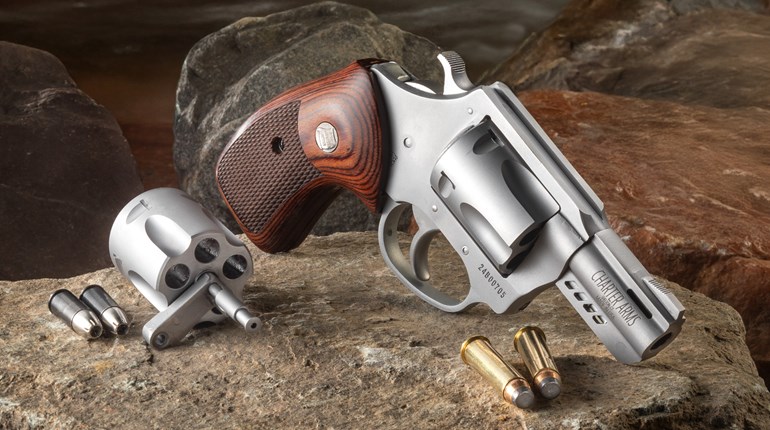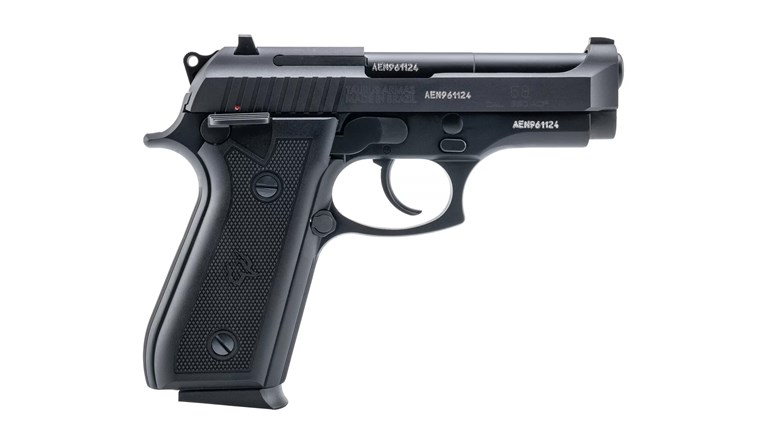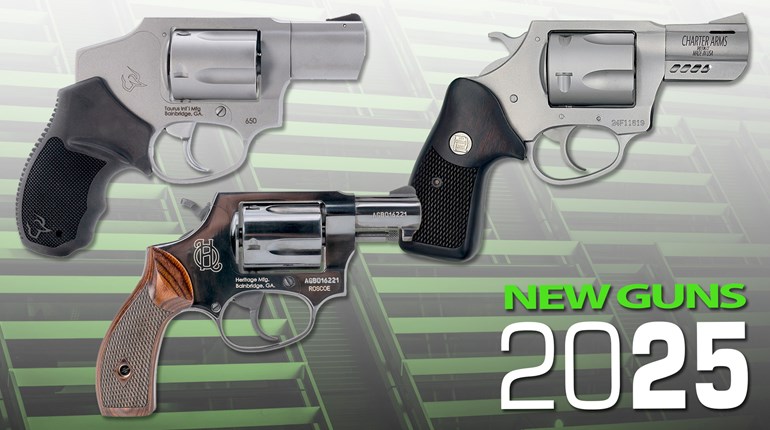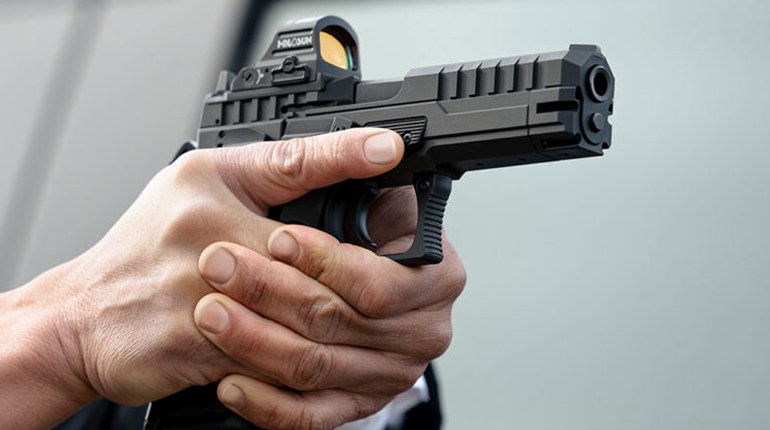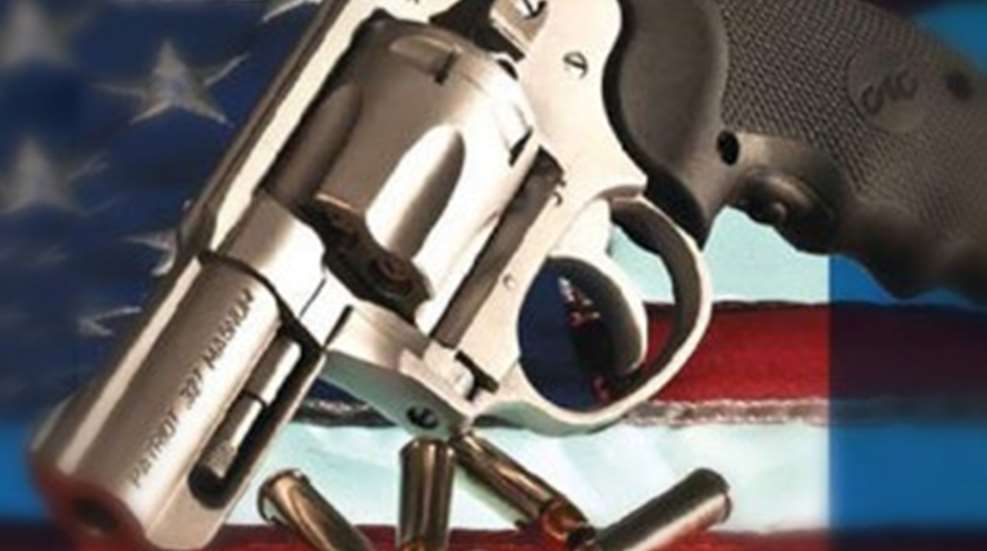
Millions of Americans are able to exercise their constitutional right to keep and bear arms thanks in part to companies that manufacture and sell those arms at prices the average Joe can afford. While marveling at high-dollar, top-end guns is healthy for the soul—one can always dream, after all—it's a hard fact of life that our enthusiasm is often tempered by our wallets. Luckily, a six-figure salary isn't a requirement of gun ownership, and plenty of options exist for those of us who watch our pennies.
Charter Arms, of Shelton, CT, is one such company that prides itself on producing firearms that place the bottom line within reach of most budgets. In fact, bringing to market affordable revolvers for self-defense was the primary principle on which Charter's founder, the late Doug McClenehan, based his operations when he opened shop in 1964. Although the company has changed names and owners a few times since then, the mission has remained the same.
Along with controlling the cost of its revolvers, Charter is also known for its innovative take on their design. The company's Bulldog model, introduced in 1974 and holding five rounds of .44 Spl., proved big-bore stopping power could be packaged in a compact, lightweight revolver eminently suited for concealment. More recently shooters have seen the Charter Southpaw, a left-hand wheelgun chambered in .38 Spl., and the "Guns of Color" line built on frames that come in pink, lavender, red and gold.
Considering Charter's penchant for responding to a myriad of needs and preferences, it should come as no surprise the company is one of only a handful of revolver manufacturers offering wheelguns in the relatively new .327 Fed. Mag. cartridge. The high-stepping .32-caliber round is the basis for the Charter Patriot, which, of course, carries one of the lowest suggested retail prices of revolvers in its class.
The Patriot family includes three variations, all built on Charter's well-known Bulldog frame. Common across the line is a six-round cylinder, with the biggest differences between the guns being barrel length and sights. The standard Patriot has a 2.2-inch barrel, and the Target Patriot's barrel is 4 inches long. Fixed sights fit the base gun's role of concealed carry, while a fully adjustable rear sight on the Target Patriot promises more precision. Although either gun makes a suitable platform for the .327 Fed. Mag., the star of the line is the Crimson Patriot, which has many of the same features as the standard Patriot but also comes with a Crimson Trace Lasergrip installed at the Charter factory. The MSRP of the Crimson Patriot is $650, while the other two guns in the line have a suggested retail of $469.
Unlike Charter's Lavender Lady and Goldfinger revolvers, "crimson" has nothing to do with the color of the Crimson Patriot. Its stainless steel frame has a matte finish that matches perfectly with the rest of the revolver's metal components. While a few areas of the frame and barrel—namely the left half of the recoil shield and on either side of the front sight—could have used a bit more polishing, the finish on the majority of the Crimson Patriot I evaluated was smooth.
The Crimson Patriot's solid, one-piece frame lacks a sideplate and is separate from the grip frame. Held in place by a series of screws and pins, the grip frame sandwiches between the inner frame walls and contains the fire-control mechanism and mainspring. Another pair of screws attaches the two-piece Lasergrip to the grip frame.
Although Charter lists a 2.2-inch barrel in the Crimson Patriot's specs, the barrel on my test sample was closer to 21⁄2 inches long. Its rifling has eight grooves, which Charter claims results in higher bullet velocity and increased accuracy. Like the frame, the Crimson Patriot's barrel is a single component. An integral, ramp front sight tops the barrel, and a full-length shroud houses the ejector rod. The snag-free contours of both the front sight and ejector-rod shroud are welcome on a gun intended for concealed carry.
A touted feature among Charter revolvers is a cylinder that locks up with the frame in three places. In addition to the conventional cylinder lockup points at the cylinder stop and the rear of the frame, the Crimson Patriot's ejector rod has a sliding collar that mates with a corresponding recess in the front of the frame. It is particularly good insurance in a revolver chambered for the .327 Fed. Mag. With a SAAMI maximum average pressure of 45,000 psi, the .327 Fed. Mag. is among the hottest factory-loaded defensive handgun cartridges in existence.
Pressing forward on the frame-mounted cylinder latch frees the cylinder to swing out of the left side of the frame for loading and unloading. The latch's surface rises at the front and is aggressively serrated to keep your thumb from slipping. I found it easy to operate with both bare and gloved hands. Firmly pushing the spring-loaded ejector rod to the rear causes the star-shaped extractor to lift the cases or cartridges contained in the cylinder's charge holes about 5⁄8 inch. The Crimson Patriot's short barrel necessitates a short ejector rod, and since .327 Fed. Mag. cases are about 1.2 inches long, you must complete the ejection process by tipping the rear of the revolver down. During testing, a quick press of the ejector rod coupled with gravity took care of unloading the cylinder most of the time, but there were a few instances when fired cases were a bit sticky and I had to pull them from the charge holes.
All Charter revolvers feature a transfer-bar safety system. The bar will not move into place and transfer the strike from the hammer to the frame-mounted firing pin unless the trigger is pulled fully to the rear. If you drop the revolver or accidentally release the hammer while lowering it on a loaded chamber, the gun will not fire.
The majority of Charter revolvers are designed with self-defense in mind, and the Crimson Patriot is no exception. Judging from testing I conducted, along with results compiled by Ammo Editor Richard Mann, the gun's .327 Fed. Mag. chambering should be up to the task of personal protection. Testing revealed velocities and energy levels produced by the 100-grain American Eagle jacketed-soft-point and 115-grain Speer Gold Dot loads are substantially higher than those of the .32 H&R Mag. In fact, Mann discovered that the performance of the 115-grain Speer Gold Dot .327 Fed. Mag. load exceeds that of both the 125-grain Speer Gold Dot .38 Spl. +P load and the 115-grain Cor-Bon DPX 9 mm +P load in velocity, energy, penetration and wound-cavity volume. When I chronographed the 115-grain Speer Gold Dot load from the Crimson Patriot, I got an average muzzle velocity of 1,234 fps. This is just 16 fps slower than the average muzzle velocity Assistant Editor Bob Boyd obtained with the 115-grain Cor-Bon DPX 9 mm +P load when he fired it from the Kimber Pro Aegis II. Now, keep in mind the Pro Aegis II is a 1911-style pistol with a 4-inch barrel, and the Crimson Patriot's barrel measures less than 21⁄2 inches long. Don't let that .312-inch bullet fool you; it's serious business when loaded in the .327 Fed. Mag.
Shooting the Crimson Patriot from the bench was difficult, given its small frame, stubby barrel and minimal iron sights. The cumulative effect of recoil, which is nothing to be ignored in a 21-ounce gun, certainly didn't shrink group sizes, either. I wasn't surprised to find that my offhand groups at 15 yards, fired in single-action mode while employing the Crimson Trace Lasergrip, weren't much larger than my groups from the bench. When I rested the gun on a sandbag, group sizes averaged from 1.34 inches to 2.39 inches, depending on the load. Offhand, they measured 2.38 inches to 3.63 inches. Shooting double-action offhand, I could easily keep six rounds in a 6-inch target out to 15 yards.
Several range sessions revealed a number of things about the Crimson Patriot, at least when it was in my hands. While the gun may have been difficult to keep consistently nestled against a sandbag, it handled and shot nicely when I was standing on my hind legs. As far as combat accuracy is concerned, you can't ask for more than that. It's highly unlikely that an attacker is going to let you get a good, solid rest and take precise aim in your attempt to thwart his worst-laid plans. The full-size grip frame allowed me to control the Crimson Patriot for rapid double-action firing, and the Crimson Trace Lasergrip made it easy to quickly acquire the target. Finally, the gun I tested had an excellent single-action trigger pull weight of 2 pounds, 4 ounces. However, the double-action trigger pull was quite heavy at exactly 10 pounds more, and it was a bit stagey.
After firing 55 rounds through the Crimson Patriot, it became obvious the cylinder was having timing issues. I sent the gun back to the factory, where Charter President Nick Ecker determined the ejector rod was slightly undersized. He replaced it with the proper component, and there were no problems with reliability during subsequent firing. It was a good reminder you should always run at least a few hundred rounds through any gun you plan to use for self-defense before trusting it for daily carry. Since all Charter revolvers come with a lifetime warranty, repairs are handled promptly.
Affordability is not a new concept at Charter Arms. In these times of tight budgets, it's comforting to know you don't have to pay top dollar for a gun that comes with solid features and is backed by solid service. I'm certain the patriots who fought for future generations of Americans to have the right to keep and bear arms would heartily approve of the Charter revolver with the same name.










